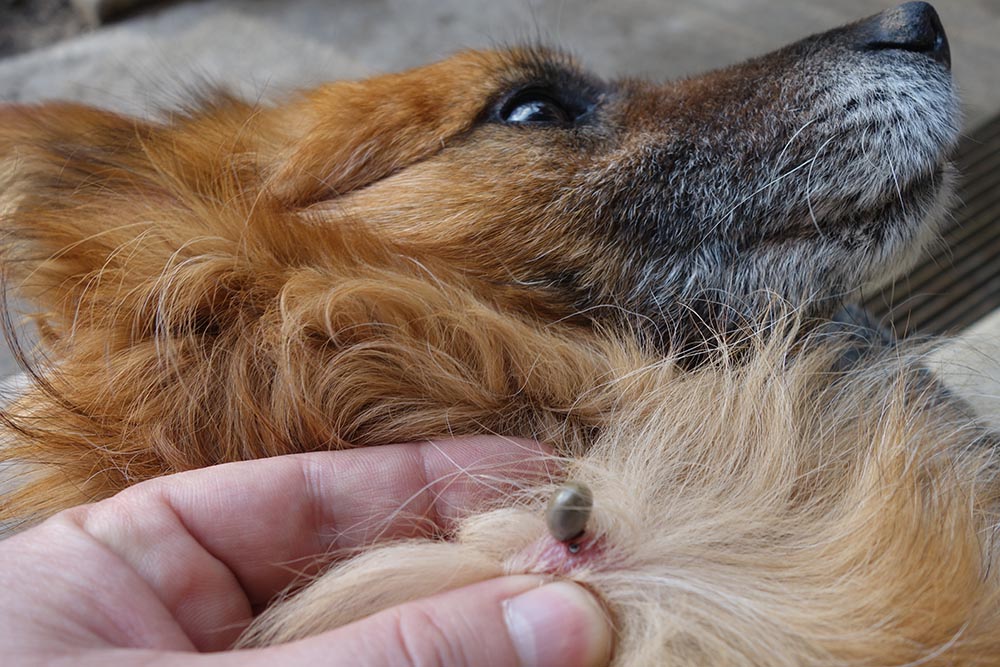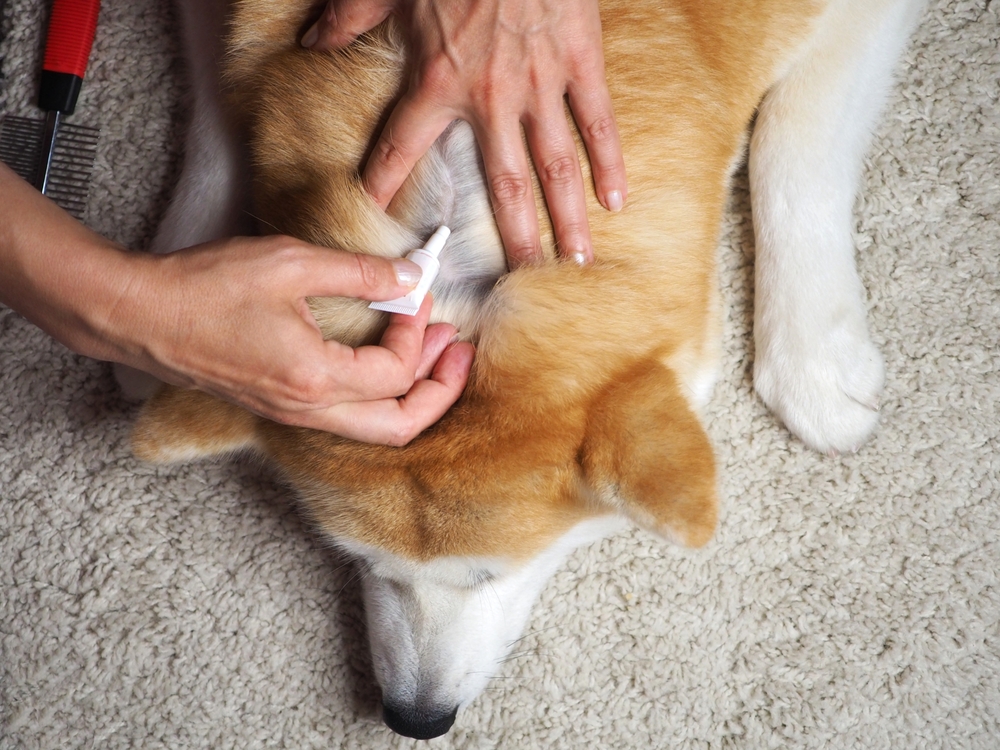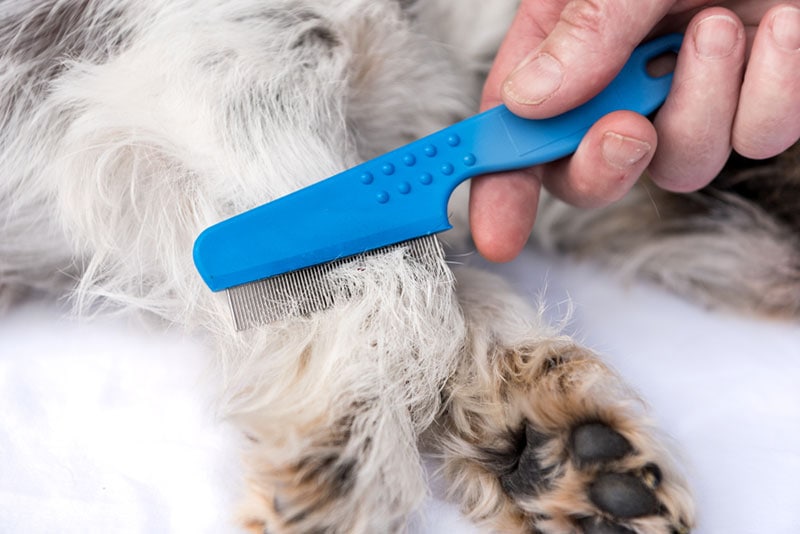In this article
If you live in the Pacific Northwest with a dog that loves nothing more than adventuring outside, you need to educate yourself on the dangers of fleas and ticks. The mild weather in these states can make fleas a year-round problem for pet owners, and ticks are beginning to present earlier and earlier every year, which may make year-round prevention a necessity in the very near future.
Read on to learn everything you need to know about fleas and ticks in the Pacific Northwest.

What Are Fleas?
Fleas are very common parasites in the PNW. These tiny wingless parasites feed on the blood of animals or humans. They can multiply very quickly, as once they’ve had a taste of your dog’s blood, they will mate and lay eggs. These eggs can fall off your pet as they go about their day, spreading them throughout your home. When the eggs hatch, they’ll quickly become adult fleas and will search for hosts to jump onto so they can begin feeding, mating, and laying more eggs.
Fleas can be difficult to get rid of and wreak absolute havoc on your home. Additionally, they can be carriers of various diseases and parasites, some of which are transmissible to humans. These include Bartonella and tapeworms.
What Are Ticks?
Ticks are small arachnids that survive by feeding on the blood of animals and humans. These creepy crawlies do just that: crawl. They also come in a variety of sizes. In their immature stages, they are barely visible, while adult ticks can be much larger, especially when they’re engorged after feeding on their host.
Like fleas, ticks can carry and transmit numerous diseases to their host. This includes things like Lyme disease, Rocky Mountain Spotted Fever, and Ehrlichiosis.


What Types of Fleas & Ticks Are in Washington State?
The cat flea, Ctenocephalides felis, is the most common domestic flea found in the United States. Other kinds include dog fleas (Ctenocephalides canis), and rat fleas (Pulex simulans). Fleas are a year-round concern in some parts of Washington State and other PNW states due to their milder winters.
The three most common ticks in Washington State and the PNW are Rocky Mountain wood ticks (Dermacentor andersoni), black-legged ticks (Ixodes pacificus), and dog ticks (Dermacentor similis). While ticks are most common during the spring and summer, they tend to present at veterinary clinics earlier and earlier every year.
Should PNW Dog Owners Be Concerned About Fleas and Ticks?
Dog owners in the PNW should be diligent and educated about fleas and ticks, especially if they spend a lot of time exploring and adventuring with their pets. That doesn’t mean that dogs that don’t go hiking aren’t at risk, however. Any time your pet goes outside, they could contract fleas or ticks, even in your own backyard. They can also pick them up for other animals that do go outside.
According to the Washington State Department of Health, relatively few cases of tick-borne diseases are reported annually, especially when compared to other areas of the United States. That doesn’t mean you shouldn’t use preventatives, nor does it mean you can skip checking your dog (and yourself) for ticks after you’ve spent time outdoors.
Some Seattle-area vets recommend using flea preventatives year-round, as they don’t see a “die off” of fleas due to the area’s temperate climate.


What Should I Do if I Find a Flea or Tick on My Dog?
Ticks need to be removed as soon as possible to minimize the chance of disease and damage. You’ll need a good pair of tweezers to grab the tick as close as you can to your dog’s skin. Pull it out gently. Do not try to remove it with your bare hands.
Dogs with tick infestations should be treated with anti-tick insecticides, which come in a variety of applications, including sprays, dusts, and spot-on solutions. We recommend speaking with your veterinary team about which type to get based on your dog’s infestation, breed, and size. If your pup is dealing with a serious infestation, we recommend taking them to your veterinary clinic for removal, as heavy infestations can damage the skin and may cause complications.
If you need to speak with a vet but can't get to one, head over to PangoVet. It's an online service where you can talk to a vet online and get the personalized advice you need for your pet — all at an affordable price!
How Can I Prevent Fleas and Ticks on My Dog?
Prevention may be easier said than done, especially for folks who love adventuring outside with their pups.
Limiting how much time your dog spends outdoors is an effective preventative. However, this is not always realistic as your pup likely thoroughly enjoys (not to mention requires) their time outdoors. Instead, bathe and brush your dog often and make it a point to inspect them for fleas and ticks. Look between the toes, under the legs, around the eyes and ears, and under the tail, as these are the spots where ticks are often found. As for fleas, keep an eye out for them in areas of your dog’s coat that are sparse or thin, including the belly, inner hind limbs, and armpits.
Keep your dog away from tick-prone microhabitats, such as tall grass or the borders between wooded areas and lawns. Keep up with the removal of vegetation and tall grass in your yard to further protect your pups.
The best prevention for year-round is a preventative medication recommended by your veterinarian. We do not recommend treating your pup with these medications unless your vet has given you the green light, as protocols may vary depending on the climate and your dog’s age, size, and breed.


Final Thoughts
Ticks and fleas are very common pests in Washington State and the Pacific Northwest. If you live in these areas, it’s important to educate yourself on what these pests look like and the protocol required if you find them on your dogs. We also recommend speaking to your vet about preventative measures to protect your pets, especially if you spend a lot of time outdoors.
Featured Image Credit: ThamKC, Shutterstock


















